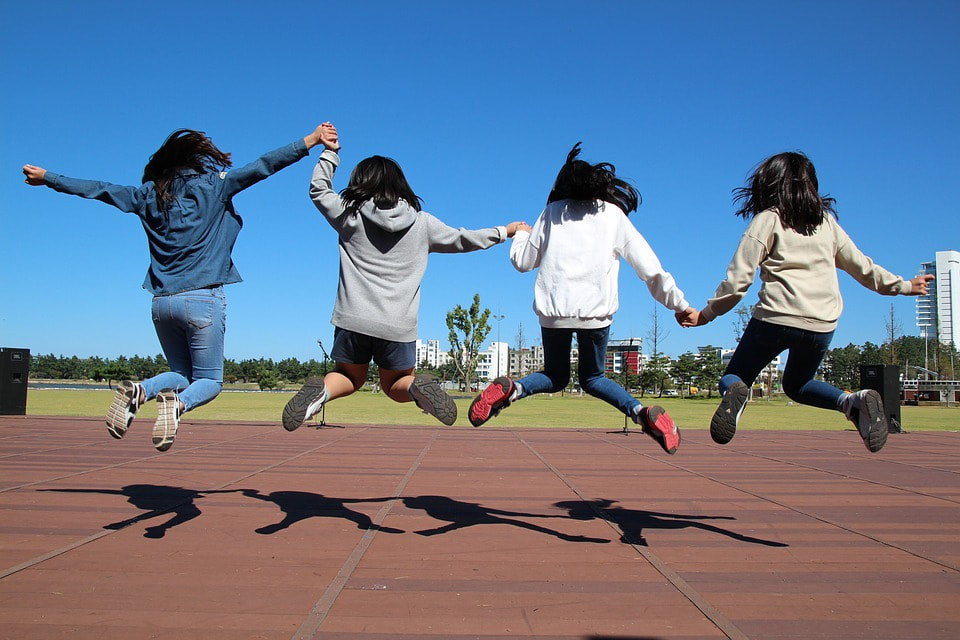Lights, Camera, Action: Considering Kinesthetic EducationBy ISJL Education Fellow Josh Altshuler
The festival of Tu Bish’vat, the birthday of the trees, is right around the corner. Although relatively minor in the Jewish calendar, Tu Bish’vat signifies a joyous celebration for the community as families gather together to explore and savor a diverse range of fruits. The Seder is a perfect example of kinesthetic learning elevating tradition beyond text and discussion. Participants often require tactile and active stimulation to engage with education, yet interactive and sensory activities like the Seder only show up a few times a year. Ignoring kinesthetic functioning disregards a significant population of congregants and students who struggle to make connections with conventional methods of instruction and presentation. This article contemplates some of the theory behind kinesthetic learning, which may help us reshape and rethink our classrooms. Bloom’s Taxonomy and Other Research Education psychologist Benjamin Bloom and other professionals developed Bloom’s Taxonomy to organize teaching goals. In its original 1956 model, the researchers considered three “domains” in educational attainment: cognitive or knowledge building, affective or emotional growth, and psychomotor or physical skills. Most of the Bloom framework focused on the affective and cognitive levels, but subsequent evaluations by Elizabeth Simpson advanced the Bloom psychomotor domain into actionable concepts that build on each other. Simpson’s model began with ideas such as “perception,” the ability to interpret sensory cues, and “guided response,” practicing imitation or trial and error to hone a new skill. The final and most complex aptitudes in the Simpson psychomotor domain are “adaptation,” altering an ability to fit different environments, and originating a new movement for problem solving purposes. Bloom’s Taxonomy and Simpson’s studies illustrate that specific and thoughtful instruction broadens skill-building. Their research calls on teachers to adapt educational assessments and procedures to fit students’ interests.[i] Howard Gardner’s philosophy of multiple intelligences also is relevant to understanding learning styles in the classroom and beyond. In contrast to the conventional dogma of a singular intelligence, Gardner identified eight distinct forms of intelligence that humans may display in any number of ways: intrapersonal, interpersonal, linguistic, logical-mathematical, musical, naturalist, spatial, and bodily-kinesthetic. Kinesthetic learners intuitively reflect many of these intelligences or may be particularly interested to cultivate new capabilities in these specific areas. Understanding that aptitude is not marked by a single character helps educators support students as they discover and demonstrate their unique identities.[ii] Let’s Get Moving Students of all backgrounds thrive in classrooms that encourage physical activity and tactile stimulation. While recess or outdoor playtime is a great outlet for releasing nervous energy, many researchers outline that educators should involve movement in actual lesson planning and application. Integrating more physical activity does not require radical changes in programming. Writer Lara Dotson-Renta highlights one teacher’s policy of allowing kindergarteners to move around a space to select artistic materials for project completion. Inviting children and teenagers to move out of their seats to engage with activities or stations acknowledges students’ independence and creativity. Moreover, the inclusion of physical mobility is valuable for brain health. According to research completed by Christopher Madan and Anthony Singhal, performed actions enhance memory. Exercise, in particular, improves long-term cognitive performance as individuals age. Teachers should consider devoting time in the schedule for group movement such as yoga, performance skits, and dance, which prolong attention spans and reinforce healthy development.[iii] The impact of movement-based learning is deeply tied to the importance of empowering a spirit of play in educational settings. At the ISJL Education Conference in 2019, Jewish educator Brad Cohen spoke about investing in children’s natural inclination to be imaginative. Cohen referenced that students discover meaning in both personal and communal play as opportunities to practice and make mistakes, collaborate with others, and reflect on big questions. This philosophy invokes a sense of fun in school and, more broadly, boosts emotional and social awareness. Educational psychologists and other professionals overwhelmingly advocate the need to adapt and introduce lesson formats that reach kinesthetic learners. Ultimately, all students deserve a meaningful chance to connect, create, and communicate. [i] Armstrong, P. (n.d.). “Bloom’s taxonomy.” Retrieved from <https://cft.vanderbilt.edu/guides-sub-pages/blooms-taxonomy/>; “Bloom’s revised taxonomy: cognitive, affective, and psychomotor.” (n.d.). Retrieved from <https://www.astate.edu/dotAsset/7a3b152c-b73a-45d6-b8a3-7ecf7f786f6a.pdf>. [ii] “A beginner’s guide to the theory of multiple intelligences.” (n.d.). Retrieved from <https://www.multipleintelligencesoasis.org/a-beginners-guide-to-mi>; “The components of MI.” (n.d.). <https://www.multipleintelligencesoasis.org/the-components-of-mi>. [iii] Dotson-Rena, L. N. (2016, May 19). Why Young Kids Learn Through Movement. The Atlantic. Retrieved from <https://www.theatlantic.com/education/archive/2016/05/why-young-kids-learn-through-movement/483408/>; Madan, C. R. and Singhal, A. (2012, November 19). Using actions to enhance memory. Retrieved from <https://www.ncbi.nlm.nih.gov/pmc/articles/PMC3536268/>. |
- Home
- WHO WE ARE
-
WHAT WE DO
- PODCAST
- Conference >
- Education >
-
CULTURE
>
- Culture Overview
- Cultural Programming >
-
History
>
-
Encyclopedia of Southern Jewish Communities
>
- Alabama Encyclopedia
- Arkansas Encyclopedia
- Georgia Encyclopedia
- Florida Encyclopedia
- Kentucky Encyclopedia
- Louisiana Encyclopedia
- Mississippi Encyclopedia
- North Carolina Encyclopedia
- Oklahoma Encyclopedia
- South Carolina Encyclopedia
- Tennessee Encyclopedia
- Texas Encyclopedia
- Virginia Encyclopedia
- Encyclopedia Credits
- Oral History
-
Encyclopedia of Southern Jewish Communities
>
- SPIRITUALITY >
- DONATE
- Shalom Y'all
- Strategic Plan
- Southern & Jewish Blog
- Calendar
- Virtual Press Kit
|
©2024 Goldring/Woldenberg Institute of Southern Jewish Life
|

